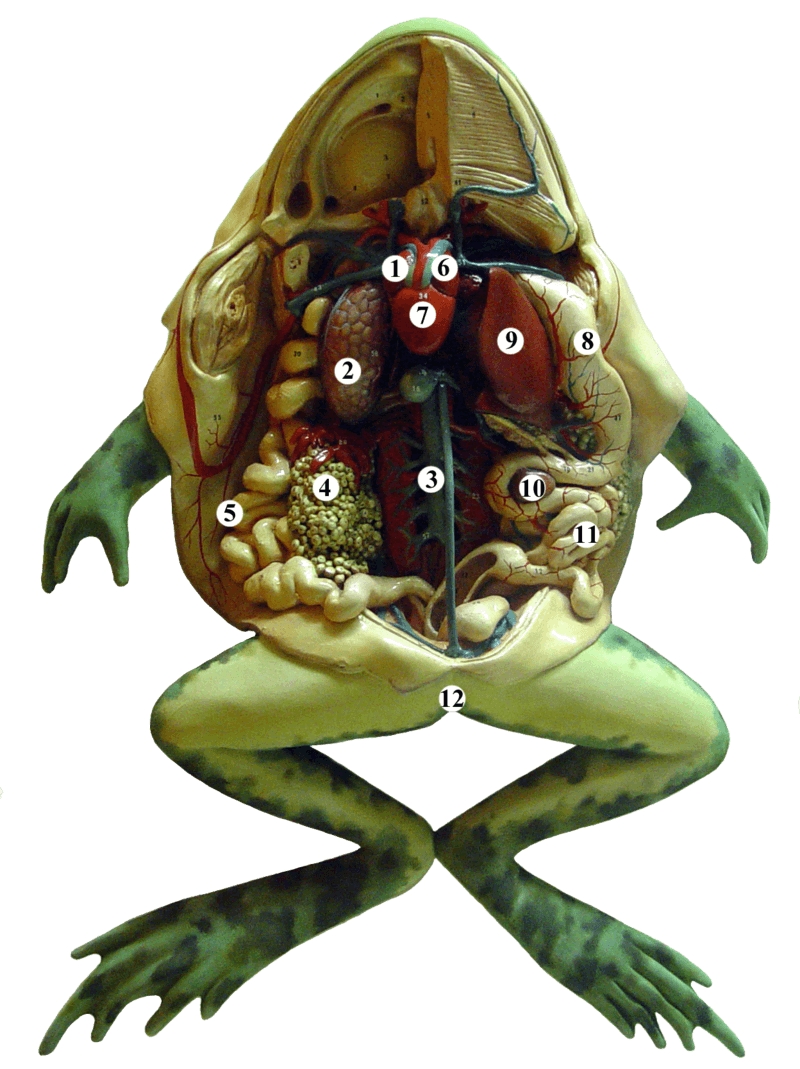External and internal anatomy of a frog. Diagrams and Pictures. The organs of frog, their functions, reproductive, dorsal organs and frog digestive system.
In many ways, the anatomy and physiology ot frogs are similar to those of other vertebrates. The heart and circulatory system, typical for amphibians, and the excretory system are perhaps the most interesting of their body systems.

Source: pixabay.com
Heart and Circulation.
The frog heart has three chambers—two atria, or auricles, and one ventricle. The 3-chambered heart is characteristic of all amphibians and is intermediate in complexity between the 2-chambered heart of fishes and the 4-chambered heart of birds and mammals.
In frogs, blood returns through the veins to the sinus venosus in the right auricle. This sinus contracts, sending the blood into the ventricle. From the ventricle, the blood flows into the pulmonary arteries and on into the lungs, where it gives up some carbon dioxide and gains some oxygen. Leaving the lungs, the blood travels through the pulmonary veins to the left auricle of the heart. The left auricle then contracts, sending the oxygenated blood into the ventricle, which in turn contracts and sends the blood through the bulbus arteriosis into the arteries of the body.

Anatomical model of a dissected frog: 1 Right atrium, 2 Lungs, 3 Aorta, 4 Egg mass, 5 Colon, 6 Left atrium, 7 Ventricle, 8 Stomach, 9 Liver, 10 Gallbladder, 11 Small intestine, 12 Cloaca (Source : wikipedia.org)
Although “used” blood from the body and freshly oxygenated blood from the lungs both enter the single ventricle simultaneously, they do not mix. Various valves keep the two streams effectively separate as much as is necessary for amphibians with their low metabolic rates and consequent low oxygen needs.
Excretory System.
The frog kidney is comparatively simple and is similar to that of fishes. A dilute urine collects in the bladder, where it is stored for a time. This storage of fluid is important for some frog species that live in arid regions, since they can reabsorb water from their own bladders as needed during the dry season. No frog, however, can prevent desiccation if placed in a drying atmosphere.

Source: pixabay.com
Dry-skinned toads lose water more slowly than do other anurans. Many frogs will explosively discharge urine from their bladders when handled, presumably as a defense mechanism.